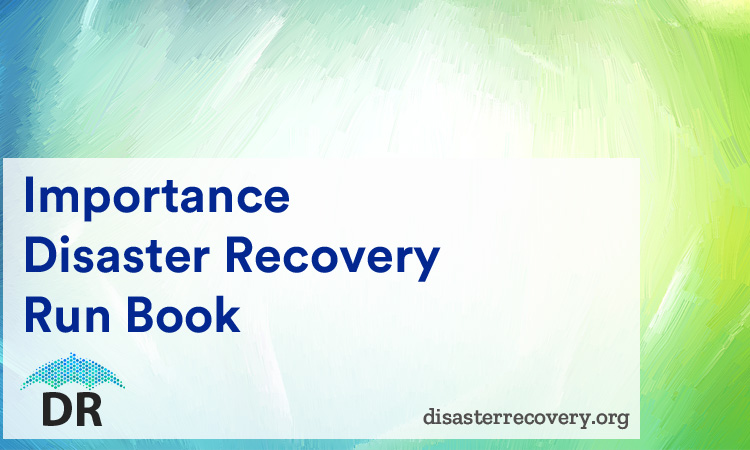When creating a Disaster Recovery Run book, you must first create a Business Impact Analysis. (BIA) You will measure mission critical business functions and the importance of those functions. Then measure the losses you will retain by losing any or all of those functions.
Importance Disaster Recovery Run Book

Next you will measure risks to your business. Which risks are more likely and less likely and the results of those risks disrupting everyday business functions.
Companies must survey all of their important inventory, making sure to track serial numbers, cost, and age of equipment. This information should be readily available, before, during, and after an emergency or disaster.
Your run book should incorporate a detailed communications plan which may have pre-written releases for certain interruptions. Your communication plan should have contacts listed in order of importance, and should inform those contacts of next steps in the process.
The communication plan should incorporate employees, clients, vendors, and partners. Capability to communicate on multiple platforms is key. One source or usage of commutation platforms will not be sufficient, as no one can plan for which communication platforms may be effected at the time of emergence. Ease of communication and pre-planned communication should be a staple of the run book
Planning for difference interruptions and for different locations is important for a successful run book. Different geographic locations will experience different interruptions and those can be planned for before they happen to your business.
It is important to make sure that the run book is up to date. If certain people in your organization hold certain
A detailed list of failover procedures and processes should be readily available to get the network back up and running in a timely manner.
Testing of the plan is important. You never know if your plan, or run book will work correctly if tests and drills are not run before an interruption happens. This is a way to improve and increase the sufficiency of all run book and Disaster Recovery (DR) backup plans.
Every employee should receive Disaster Recovery (DR) training. They should not only understand their role if a disaster were to occur, they should also know why it is important to receive training and the costs of not being prepared for an emergency. It is important for each employee to know their role in the DR Run book plan and to also know that they will be contacted. If they are not prepped the entire plan could fall through.
There is no such thing as a one size fits all Disaster Recovery (DR) plan. Some companies are so large that they may have to create separate asset groups, contact groups

